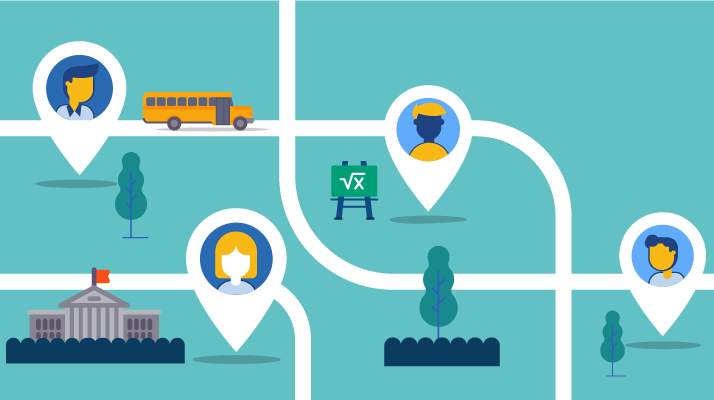Biometric Solutions For School Lunch Line Point Of Service
 The Lunch Lines They Are A Changing
The Lunch Lines They Are A Changing
Modern day lunch line point of sale (POS) software requirements must transcend the ability to just ring up a sale and generate a receipt. There are a host of areas that school food service POS technology must address ranging from quick and accurate check outs to the security of students necessitating a flexible and agile POS system that interfaces easily with back end accounting and inventory systems. Many schools adopt PIN pad entry or barcode scanning systems but later find that students often forget their PIN #’s or leave their ID cards at home causing logjams in the lunch line, frustrated staff and embarrassed students. Worse still, bullies can steal the PIN # or ID card of another student and use it fraudulently to pay for their own meals. The question becomes, how do you implement a lunch line POS software system that assures smooth transactions and lunch line flow but at the same time keeps student safety, security and accountability paramount? Many schools are turning to affordable and safe biometric fingerprint recognition solutions as the answer.
Biometric POS Software Systems
The fast paced world of today’s lunch line POS environments demands user-friendly software that can handle transactions with speed and accuracy to maximize profits without sacrificing precision or security. A biometric POS software system eliminates the need for students to remember a PIN code or use a barcode ID when they get to the register. The student simply scans their finger on the biometric hardware and immediately their identity is established and transaction recorded. The process is fast, safe, reliable and accurate. It maintains the flow of the line allowing students who sometimes only have 20 minutes or less for their lunch period to get in and get out as quickly as possible.
More Schools Adopting Biometric Technology
More and schools are turning to affordable biometric POS systems as a trusted component of their cafeteria management software technology to incorporate secure systems that hedge against losses by boosting the accuracy and security of transactions. Fingerprint recognition has become the mainstream biometric modality of many lunch line POS systems but as biometric technological advances have evolved, more schools are choosing advanced biometric technology such as fingervein, palm vein and iris recognition as their modality of choice due to the inherent benefits that are included in these hardware modalities such as lower False Acceptance Rates and a more hygienic scanning environment.
Privacy Concerns
There are many rumors virally circulating about biometrics and its privacy implications for children. Some fear that if a hacker breaks into the school computer system and steals a biometric template, the damage is irreversible and not able to be corrected. Others say that once a biometric template is established for a child, it gives free reign for any governmental agency to lawfully access that template to create a national registry of biometric identification information. The truth of the matter is that biometric enrollment templates stored on a server are not actually an image of the fingerprint at all. They are a mathematical representation of the data points that a biometric algorithm extracts from the scanned fingerprint. The algorithm then uses the template to positively identify a child during subsequent fingerprint scans. No image of the fingerprint is ever stored or transmitted across a network. In addition, the algorithm is “one way” which means that the template that is extracted is nearly impossible to be used to recreate the original fingerprint image. In other words, it is nearly impossible to reverse engineer the data that is sent to positively identify a child and successfully “steal” their biometric identity.
Biometrics Are The Future – Bar Codes And PIN’s Are Not
As more schools adopt biometric identification technology for their lunch line point of service needs, word is spreading fast about the distinct benefits that biometrics creates for efficient cafeteria management. The focus on cafeteria lunch line best practices over the years has evolved into developing faster and smarter ways of planning and executing tasks with less staff, less overhead and higher security. Biometric technology fits well into this evolution because it offers speed and flexibility for identifying students and can easily be interfaced into most existing cafeteria management software systems at a very affordable price point. It trumps bar codes (no card to forget with biometric identification) and PIN’s (no longer need to memorize numbers), allowing schools to implement a modernized mode of student identification with the peace of mind that their students are safe and moving quickly through the line. If you haven’t heard about the benefits of biometric technology we encourage you to contact us, or visit our Web page for more information.
How would incorporating biometrics in your lunch line POS technology be a benefit to you?













My students attend a school where your biometric reader is being used in the cafeteria. My children always come home and complain about how it does not identify their finger and a lot of their peers. I think that the school should invest in a higher quality reader that can register little kids.
Thank you for the comments Mr. Donahue. We have our readers deployed at many schools that are able to use them successfully. Often times, the problems associated with the readers being unable to identify a child has to do with the quality of the enrollment template that is created at the time the student first registers on the reader. In other words, if the original template created is not high quality it is less likely that the child will be identified on subsequent scans because the original template is what is used as the matching identity for each scan. The other, less likely scenario is that the sensor is bad and we would need to replace the reader. I would be more than happy to investigate this for you if you can please give me the contact information for the school. Thank you for your comments, and I will work hard to get you a resolution so the technology works to your expectations.
I guess I am too old school to appreciate these readers. What an awful day we live in when we have to have this kind of ID to eat lunch. Louise
Louise,
Thank you for your comment. What are your concerns about the use of the readers to help facilitate a safer, faster and more accurate lunch line for the children? Do you have concerns about privacy? Identity theft? Something else? Please let us know what’s on your mind. Thanks.
I agree with Louise. I believe there are concerns about privacy anytime the government is involved. I also wonder if the speed/accuracy is enhanced by such a method. We got along famously without such things for many years. And, I know many will like hearing this, when I went to school I took a lunch box and the taxpayer didn’t foot the bill for my lunch. Ruth
Total information was interesting to see.. thank you for sharing this information on Biometric fingerprint systems and their usage….work relates..I was looking for a nice article about Biometric.. and Biometric Finger Print Systems over the internet but could not get any..But your’s is distinguished and
quite good sir.Thanks for the post.
Pingback: Biometrics As A Tool To Help Suppress Bullying - M2SYS Blog On Biometric Technology
we’ve discussed this but there has been no support. We deal with students going back and getting 2 or three lunches for their friends and theirs really no way to control it. When parents get the bill they are pretty livid and refuse to pay the additional lunch amount. Even with facial ID’s most staff don’t often looking and moving from a barcode scanner to a magnetic strip reader takes away that initial security check to verify the ID that is now being swiped by students. From some preliminary research I’ve done, especially in the UK, it looks like after the finger prints are digitally transformed and “not” reversed engineered easily to turn those numerical codes back into actual fingerprints. Definitely more research to do but in a day and age where parts are concerned about privacy, while their children have full access to the internet on their cell phones, have personal information on social media accounts, and smartphones that automatically track and map your daily travels to a satellite GPS algorithm and pinpoint your travel times without asking your destination, I think their priorities are in the wrong place. (sorry for the serious run on sentence).
Thanks for the comment.
The first thing i want to Let you know that fingerprint, not facial recognition is the most often used modality in school lunch lines.
You have mentioned “most staff don’t often looking and moving from a barcode scanner to a magnetic strip reader takes away that initial security check to verify the ID that is now being swiped by students.” – im not sure how this is related to using biometrics for student ID, rather this sounds like a training issue. These two aren’t mutually exclusive.
I would also like to disagree with your concerns about fingerprints being “reversed engineered” it is virtually impossible to do this with modern biometric ID systems and even if someone were to reverse engineer the binary code, what would a perpetrator do with the images?
Hope our answers will help with your concerns.
Thanks for the comment.
The first thing i want to Let you know that fingerprint, not facial recognition is the most often used modality in school lunch lines.
You have mentioned “most staff don’t often looking and moving from a barcode scanner to a magnetic strip reader takes away that initial security check to verify the ID that is now being swiped by students.” – im not sure how this is related to using biometrics for student ID, rather this sounds like a training issue. These two aren’t mutually exclusive.
I would also like to disagree with your concerns about fingerprints being “reversed engineered” it is virtually impossible to do this with modern biometric ID systems and even if someone were to reverse engineer the binary code, what would a perpetrator do with the images?
Hope our answers will help with your concerns.